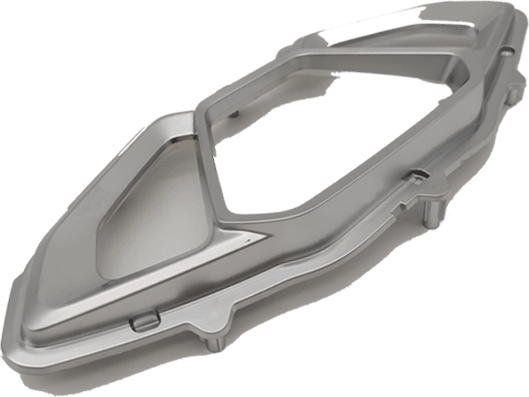In the realm of global manufacturing, efficiency and precision are not just goals—they are imperatives. Plastic injection molding technology has become a linchpin in achieving these objectives, offering unparalleled versatility in the production of plastic parts and components. For businesses engaged in foreign trade, where the margins of success are tightly bound to the quality and cost-effectiveness of products, the adoption of this technology can spell the difference between leading the market and lagging behind. This article takes a deep dive into the world of plastic injection molding, highlighting its significance, applications, and best practices as they relate to the foreign trade industry.
At its core, plastic injection molding is a transformative process that melds efficiency with versatility. It involves melting plastic granules until they're fluid enough to be injected under pressure into a mold—where they solidify into the desired shape. The advantages are manifold: the process allows for high-volume production of parts with complex shapes and fine details, all while maintaining consistency and accuracy. Materials commonly used in this process include polyethylene, polypropylene, ABS, and polycarbonate, each offering distinct properties to suit a myriad of industrial applications. Understanding these fundamentals is crucial for businesses looking to leverage this technology to its full potential.
Plastic injection molding's versatility is showcased across a spectrum of global industries. In the automotive sector, it's used to create durable, heat-resistant components; in healthcare, it provides for the high-volume production of medical devices and consumables. Consumer goods, packaging, and construction also rely heavily on plastic parts produced by injection molding. These applications are united by a common thread: the need for cost-effective production without compromising on quality— a requirement that injection molding meets with remarkable efficacy.

The choice of material in the injection molding process is as critical as the technology itself. The selection hinges on the required properties of the finished product—whether it needs to be rigid or flexible, resistant to heat or chemicals, transparent or colored. For instance, polyethylene is renowned for its toughness and is often used in consumer packaging, while polycarbonate offers the clarity and precision required for optical components. This section will provide a detailed guide for B-end users to navigate the complex decision-making process surrounding material selection, aligning the material properties with the product's intended use and the practical considerations of foreign trade logistics.
The injection molding process, while robust, requires meticulous optimization to produce parts that meet stringent quality standards. Factors such as mold design, temperature control, and injection speed must be finely tuned. Precise temperature regulation is crucial, as it affects the fluidity of the molten plastic and can lead to defects if not properly managed. Injection speed must be calibrated to fill the mold effectively before the material cools, while still maintaining the structural integrity of the part. This section will outline strategies to optimize these variables, drawing on industry best practices to enhance the production line's output quality and operational efficiency, which are of particular importance in the fast-paced arena of foreign trade.
Innovation in plastic injection molding technology has been relentless, driven by the demand for more sustainable production methods and smarter manufacturing processes. The integration of IoT (Internet of Things) devices and automation has led to smarter, more efficient production lines capable of real-time monitoring and adjustments. Additionally, advancements in materials science have introduced biodegradable polymers to the market, offering an eco-friendlier alternative to traditional plastics. This section will examine these innovations, focusing on how they can be applied to reduce costs, improve product quality, and minimize environmental impact—a triad of benefits that align with the priorities of B-end users engaged in international commerce.
Adherence to international regulatory standards and certifications is a critical concern for businesses operating within the global trade ecosystem. Plastic parts used in food packaging, medical devices, and children's toys, for example, must comply with a myriad of safety and quality regulations. Standards such as ISO 9001 for quality management systems and ISO 14001 for environmental management are often prerequisites for entering global markets. This section will navigate the complex landscape of these standards, offering guidance on how businesses can ensure their injection molding practices meet the necessary regulatory requirements and leverage these certifications to gain market access and build consumer trust.
Environmental sustainability is no longer optional in manufacturing—it's a mandate. The injection molding industry faces the challenge of reducing its carbon footprint while maintaining productivity. Efforts to meet this challenge include optimizing energy consumption during production, recycling excess plastic from the manufacturing process, and exploring alternative materials that offer a reduced environmental impact. This section will detail how businesses can implement sustainable practices in their injection molding operations, discussing the balance between ecological responsibility and economic viability, and how this balance can be a driver for innovation and competitive advantage in the foreign trade sector.
The conclusion will synthesize the insights presented throughout the article, reaffirming the significance of plastic injection molding technology as a key driver of innovation and efficiency in the manufacturing landscape. It will underscore the importance for B-end users to remain at the forefront of technological advancements, regulatory compliance, and sustainability practices to excel in the competitive environment of foreign trade. The closing remarks will aim to leave the reader with a clear understanding of the strategic value injection molding technology brings to their business operations and the global market at large.